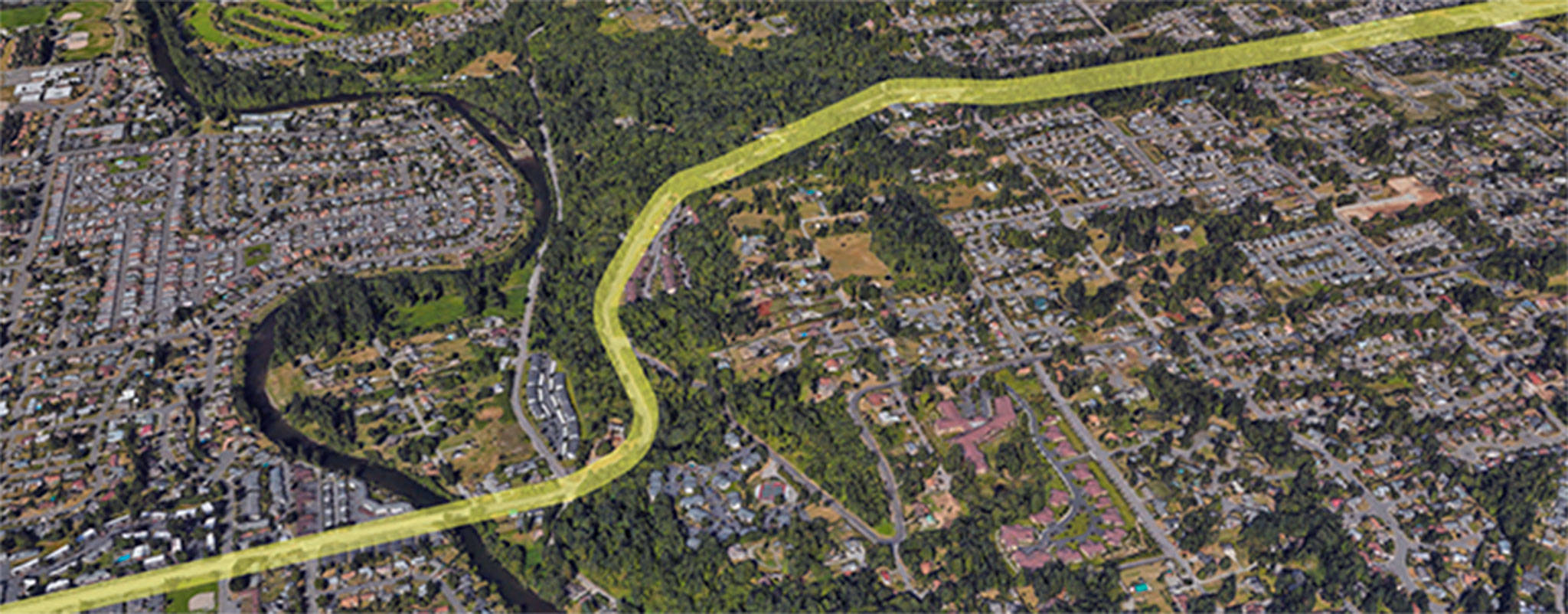Improvements to the Lea Hill Road Corridor should cost roughly $25 million.
But for those dollars, planners say, residents and passers-through will find it easier and more safe to get around with more capacity along this critical east-west arterial.
So says the team that assembled the final report on the Lea Hill Road Corridor, now available on the city’s website.
Four overarching objectives guided the decision-making process: to adequately accommodate growth; to improve mobility; to enhance safety for all roadway users; and to increase access for vehicles, bicycles and walkers.
The recommended corridor design includes the following key elements:
• Closure of Garden Avenue SE/102nd Avenue SE with a new street connection to 104th Avenue SE to reduce turning conflicts at this location while maintaining access for all properties.
• A multi-lane roundabout intersection at 104th Avenue SE and realignment of Lea Hill Road to improve sight distances and process traffic more efficiently.
• Single-lane roundabouts at 112th Avenue SE and 116th Avenue SE to improve traffic operations, remove turning conflicts and reduce speeding.
• A right-in/right-out intersection at 105th Place SE and removal of the existing signal to keep traffic moving on the hill where sight distances are limited.
• Left-turn restrictions along 8th Street NE, potentially including the intersection at Pike Street NE, to streamline traffic in this congested segment of corridor.
• Wider sidewalks on both sides of the 8th Street Bridge to increase pedestrian safety and calm traffic by narrowing the curb face to curb face width, which reduces speeds.
• Continuous pedestrian and bicycle facilities and enhanced pedestrian crossings to improve mobility for non-motorized modes.
• Improved access to bus stops and upgraded amenities to enhance the transit rider experience and their safety.
• Eastbound right-turn lane approaching 124th Avenue SE to improve operations and reduce vehicle queues at the intersection.
• Streetlight upgrades to improve visibility and safety for all road users at night.
The $25 million price tag to make all that happen makes it unrealistic, planners say, to think of a project of this size happening as one large mega-project. So, to make it workable, planners have split the corridor design into five smaller projects that are more financially feasible and may be more competitive for different local and grant funding sources.
The two projects included in the city’s transportation improvement plan were prioritized because they address current safety concerns and near-term level of service/capacity issues. The other projects will be added to the city’s Comprehensive Transportation Plan and will be considered for inclusion in future TIP as available funding and priorities align.
In the fall of 2018, Auburn launched its study of the corridor to develop a long-range corridor plan that improves mobility, capacity and safety along the arterial.
The study area includes segments of 8th Street Northeast, Lea Hill Road, and Southeast 312th Street between Harvey Road/M Street SE and 124th Avenue Southeast, which provides connections to Downtown Auburn, Lea Hill, Green River College and Highway 18.
Development and growth within Auburn and across the Puget Sound region are projected to increase traffic volumes over the 20-year planning horizon, intensifying existing and emerging congestion issues. However, several physical constraints within the study area make simply widening the Lea Hill Road Corridor difficult in terms of construction cost and potential environmental impacts.
So, to effectively consider tradeoffs between the expected benefits and costs, the city of Auburn used a value- based approach to evaluate various alternatives for the future roadway section and intersection design. While developing the plan, continuous engagement with the public and key stakeholders helped to inform the evaluation methodology and the final corridor recommendations.
When it comes to implementation, according to the report, “the city will need to be both proactive and opportunistic — working to implement projects that address existing operational and safety needs first, using local matching funds to leverage grants for projects that are well suited for a particular program, and working with developers to get pieces of other projects completed.”


